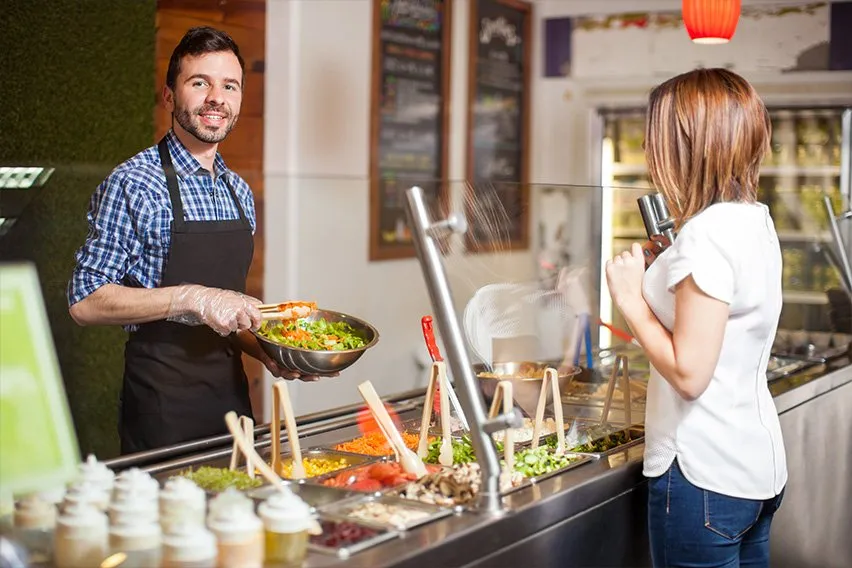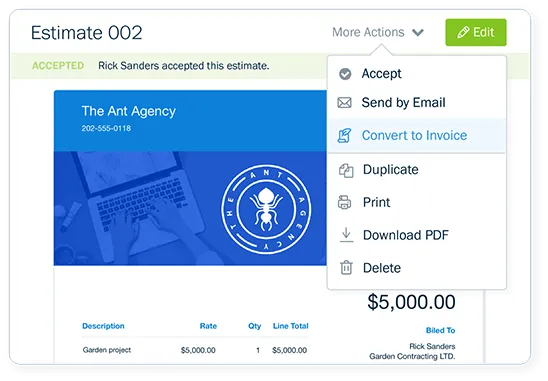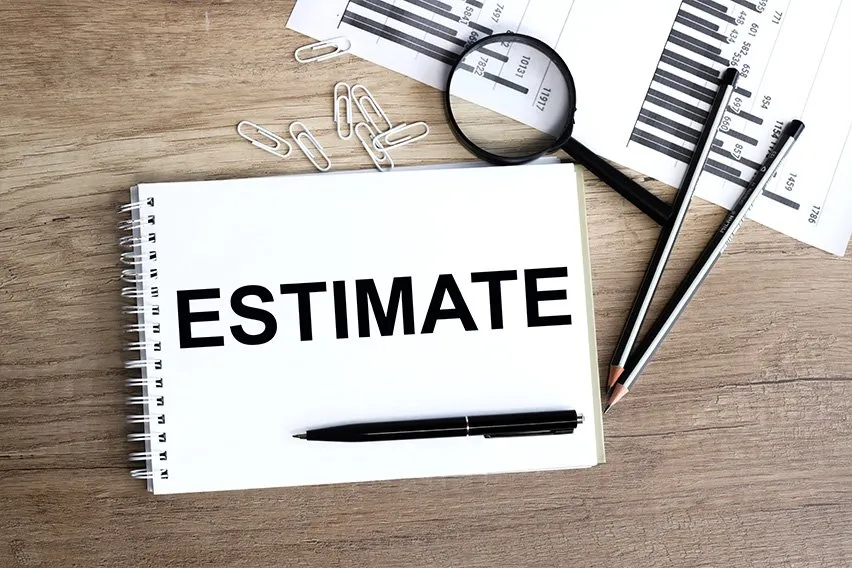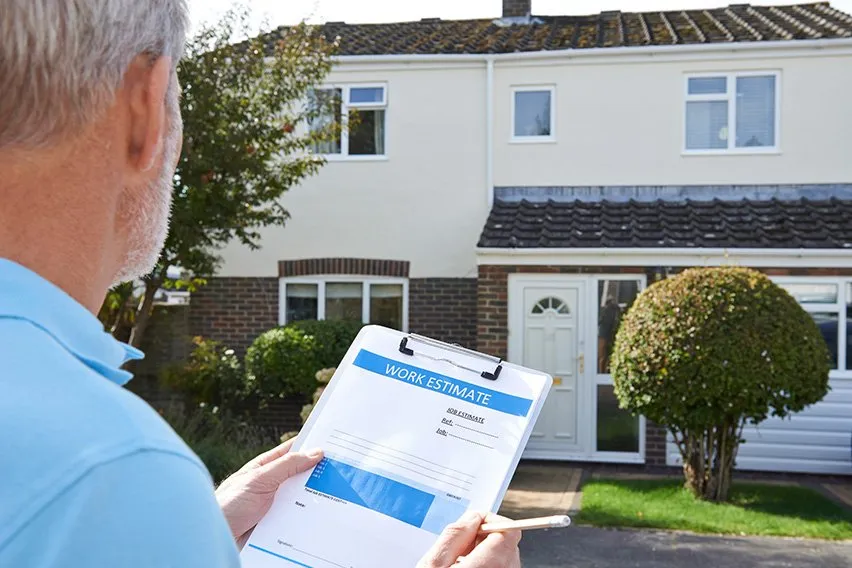How to Charge for Catering: A Complete Pricing Guide

Stuck between trying to land new clients and making a profit? Our catering costs guide will help you make accurate estimates of food, rental, alcohol, labor, and overhead costs so you can charge what you’re worth, keep your cash flow happy and stay in the catering service business for the long haul.
Need a catering costs estimate template? FreshBooks’ online estimating software makes generating and sending estimates easy. Plus, you can quickly convert them into invoices when the job’s done.
Key Takeaways
- Catering costs depend on the client’s choice of menu and service, including special requests and additional items
- Bars at events can get really expensive
- Supplies, rentals, and equipment should be factored in for any type of food service
In this article, we’ll cover:
Consider the Type of Food and Service
1. Get a Guest Count
Nothing will affect your catering prices more than how many guests are attending the event (other than the food choices, of course), advises Draper’s Catering. Of course, some people inevitably won’t show up, or others who didn’t RSVP will. You’ll need to include a policy in your estimate around changes and guarantees to protect yourself.

2. Consider the Type of Food and Service
Your catering costs are going to depend greatly on the client’s choice of menu and service. An hors d’oeuvres buffet usually comes with the lowest price tag, though buffet additions like a carving station can affect catering costs quickly.
Dinner won’t cost much more than appetizers only in terms of food prices but glassware, servers and china plates will definitely add to the total fee. For clients looking to save money, advise them to feed guests outside of regular mealtimes so they won’t have to provide a main course.
Also, consult with the client about special requests and additional items. Do they want sustainable seafood? Are there any dietary restrictions? What about food truck catering for later on in the evening? Review your custom menu with the client and get them to approve all the ingredients, advises the Houston Chronicle.
3. Add Food Costs
Now that the client has approved the menu, make a detailed ingredient list with quantities and add up how much the food will cost you. Find a supplier and price out any special ingredients that have been requested.
It’s easier to figure out how much to feed everyone if each guest is served a set meal as opposed to a buffet. For a set meal, each person will probably eat about four to six ounces of meat, two side dishes, an appetizer, and dessert.
Keep in mind that your food bill should be about 30 percent of your total price, advises the Houston Chronicle. However, aiming for closer to 24-28% can deliver better profits for your catering business.
Here are some estimates of food prices per person from Draper’s Catering:
- Hors d’oeuvres: $14 to $18
- Buffet dinner: $10 to 14
- Plated dinner: $11 to $15
- Stations: $14 to $18
4. Add Supplies Costs
Consider if you need the following items and how much each will cost you:
- Chafing dishes
- Napkins, tablecloths, and other linens (disposable or not)
- Chairs
- Glassware
- Flatware
- Utensils
- Equipment
Draper’s Catering estimates that rentals should cost $2 to $6 per person for any type of food service, whether it’s plated or buffet.
5. Add Bar Costs
Bars at events can get really expensive. Sometimes clients will pay two to three times their food catering costs on alcohol. The client may choose to buy their own alcohol and hire a licensed bartender if the venue allows for it. Otherwise, you will need to price out the cost of alcohol and non-alcoholic beverages, the setup, cups, ice, a bartender, and more.
Draper’s Catering recommends pricing for one drink per hour, per person, and buying 35 percent beer, 30 percent wine, and 35 percent liquor. Or 60 percent beer and 40 percent wine. One keg of beer should provide 140 to 165 12 oz servings and a 0.75-liter bottle of wine should serve five 5 oz glasses. A 1.75-liter bottle of liquor should serve 40 1.5 oz drinks.
On average, bar services should cost about $2 to $4 per person.
6. Add a Service Charge
A service charge will first of all include labor costs. Figure out how many staff members, servers, and assistants you’re going to need. You can also include a gratuity in the service charge, or leave it up to the client to tip the staff themselves.
The service charge should also cover administration and coordination costs. In short, your overhead. Consider the owner and all other administrative staff’s salaries. You also want to factor in the cost of rent, marketing, other equipment, utilities like electricity and gas, travel costs like vehicle fuel and maintenance, internet and phone bills, insurance, and taxes. Find your average monthly overhead.
Now consider how many jobs your catering company does per month. You need to split your monthly overhead between these jobs.
For example, if your monthly overhead is $5,000 and you do 10 jobs a month, you need to charge $500 extra per job to cover your overhead.
Finally, you need to factor in your profits. You can add a flat fee or factor in a percentage, like 25 percent.
Draper’s Catering estimates that the total service charge should be $5.50 to $9 per person.
Sometimes you may need to be flexible to accommodate the client’s budget, but you should certainly always be making a profit from each job. Don’t drive down your prices to compete otherwise you’ll hurt your cash flow as well as your chances of surviving over the long term.
7. Find Your Total Catering Costs
Add together your food costs, labor, rentals, bar services, service fee, and taxes to find the total price to quote your client.
Draper’s Catering estimates the following per-person rates:
- Hors d’oeuvres: $26 to $36
- Buffet dinner: $26 to $37
- Plated dinner: $31 to $42
- Stations: $14 to $18
Pocket Planner is an app that has a free catering pricing calculator in case you want a quick way to provide a preliminary estimate for a client. You can also download this catering pricing template to calculate food costs and gross profit.

A Pricing Tip for Caterers
Catering menus typically offer two pricing systems: Fixed or tiered. Fixed pricing uses a set price for every guest or menu item, for example, the chicken plate may cost $20. Tiered pricing changes depending on the number of guests, so for 100 guests the chicken may cost $20 but for 150 guests each plate might cost $18.
Choosing which pricing system is right for your catering business depends upon your preferences, labor, and supplies. If you have access to a bulk supplier who charges less for larger ingredient orders, offering a tiered pricing option can encourage clients to hire you for larger events while still supporting your profit margin. If you cater mainly to smaller events, maintaining a fixed pricing system can be a simple and stable option. Providing a clear estimate for your prices is key to gaining customers and creating lasting relationships. FreshBooks estimating software makes your process easy with estimate templates, invoices, and online billing options.Click here to explore how estimating software can support you and your clients!

Conclusion
You’ve got plenty of options when it comes to pricing for your catering business. Start by gathering essential information like a guest count and the desired menu, then discuss options like courses and level of service with your client. From there, you can offer a fixed or tiered pricing system. You may even choose to offer both to give potential clients even more options.
In addition to considering service factors like the menu, you’ll also have to explore your local industry and competition when setting your pricing. It can be helpful to look at how other catering businesses price their services to get a sense of what’s standard. It’s important to stay competitive, but remember to set rates that will still give your business a profit.
People also ask:
- How Much Does a Caterer Make per Hour?
- How Do You Calculate Food Cost per Person?
- What Is the Average Cost of a Wedding Catering Buffet?
- What Is the Average Catering Cost per Person for a Wedding?
- What is the standard markup for catering?
- What is a good profit margin for catering?
FAQs On Estimate Catering Jobs
How Much Does a Caterer Make per Hour?
Caterers typically make from $8.72 to $25 per hour, with the average being $15.25 per hour, according to Sokanu. Top-end caterers make $25 per hour while those just starting out typically make about $8.72 per hour. The average hourly rate is highest in New York and California, at $17.46 and $17.41 respectively.
How Do You Calculate Food Cost per Person?
First, cost out how much your ingredients are going to be and find out how many guests are attending. Divide the total ingredient costs by the number of guests.
It’s easier to price this out if you’re doing a plated dinner, as you’ll typically be serving four to six ounces of meat, two side dishes, an appetizer, and dessert per person. Remember, children will only eat half as much as adults.
What Is the Average Cost of a Wedding Catering Buffet?
The average cost of a wedding catering buffet in the U.S. is $4,000, with a range from $1,800 to $7,700, according to Wedding Wire. That said, the catering service cost can go as low as $400 and as high as $13,000 and up.
What Is the Average Catering Cost per Person for a Wedding?
The average wedding catering cost per person for a wedding in the U.S. is $85 per person, according to the Bridal Association of America. This figure is based upon a wedding with 150 guests (the average) and includes food and food service, drinks and drink service, and cake and cake cutting fees.
What is the standard markup for catering?
The standard markup for catering is usually three times the cost of the food. You may choose to alter this depending upon your food order costs, overhead, and industry competition.
What is a good profit margin for catering?
A good profit margin for catering is generally considered to be around 7% or 8%.
Reviewed by
Jason Ding is a seasoned accountant with over 15 years of progressive experience in senior finance and accounting across multiple industries. Jason holds a BBA from Simon Fraser University and is a designated CPA. Jason’s firm, Notion CPA, is an accounting firm with a business-first focus. The firm specializes in preparing personal and corporate taxation while providing fractional CFO work and leading the accounting and finance function for several small-to-medium-sized businesses. In his free time, you’ll find Jason on the basketball court, travelling, and spending quality time with family.
RELATED ARTICLES


 How Much to Charge for Delivery? A Small Business Owner’s Guide
How Much to Charge for Delivery? A Small Business Owner’s Guide Is an Estimate Legally Binding? | A Small Business Primer
Is an Estimate Legally Binding? | A Small Business Primer How to Estimate Photography Jobs in 6 Steps: A Guide for Freelancers
How to Estimate Photography Jobs in 6 Steps: A Guide for Freelancers How to Price Landscaping Jobs in 7 Steps: A Simple Guide
How to Price Landscaping Jobs in 7 Steps: A Simple Guide How to Estimate Power Washing Jobs in 5 Steps: A Simple Guide for Small Businesses
How to Estimate Power Washing Jobs in 5 Steps: A Simple Guide for Small Businesses How Much Do Painters Charge in 2025?
How Much Do Painters Charge in 2025?